About this blog: Holi is one of the biggest festivals in India. Often dubbed as the color festival, Holi is a festival of spring in India! In Bengal, Holi is also known as Dol Utsob. The spirit of the festival remains same, however Dol Utsob or Basanta Utsob is celebrated with an extravagant cultural prelude along with organic colors. Colors used in Dol Utsab are more often than not procured from Palash, Bastard teak. Here is a blogpost dedicated to fading memories of Basanta Utsab in Shantiniketan. If you are in search for an alternate travel destination in India this season of Holi, visit Shantiniketan, founded by none other than Rabindra Nath Thakur.
Dol Utsab or Basanta Utsab is also celebrated at the Rabindra Bharati University Campus at Baranagar, Kolkata. It is a photographers’ paradise for portrait shots!
A prelude to Basanta Utsav in Shantiniketan
During my life in Delhi, Holi came and was gone twice. The days preceding the event were usually filled with enthusiastic description of Bhaang, the experience from drinking that from the previous year, the preparation. My friends would order a swimsuit or two from online world, usually in royal blue hue, matching seamlessly with the sprawling swimming pool of the resort of Gurgaon. Some had their brothers coming back from hostels for a week. Some would go for a long road trip. When I would mention of Mathura or Vrindavan, the usual look was “why would you visit a place that crowded?” I was a lone lady wolf in Delhi. My holi would necessarily be staying indoors, binging on Arabic Biryani (yes, the Vasant Kunj shop) and watching Forest Gump for the umpteenth time.
Life brought me to Bangalore in a few years. The soul of the tech city struggles to find one single excuse to escape to the Nilgiri hills or to the coast of Arabian Sea. Half of my college mates never heard about the legacy of Laath Mar Holi. And then, life happened again. I became a travel blogger! It suddenly dawns upon me, none talks about the Basanto Utsab that we celebrate in the East of the country!
It is one thing to celebrate Holi with hedonistic Bhaang, a burst of colors, away from the town in a resort of farm house, making merry with friends or families. It is another thing to celebrate Basanta Utsab, fondly referred to as Dol Utsob, at the university town of Bolpur, Shantiniketan in West bengal.
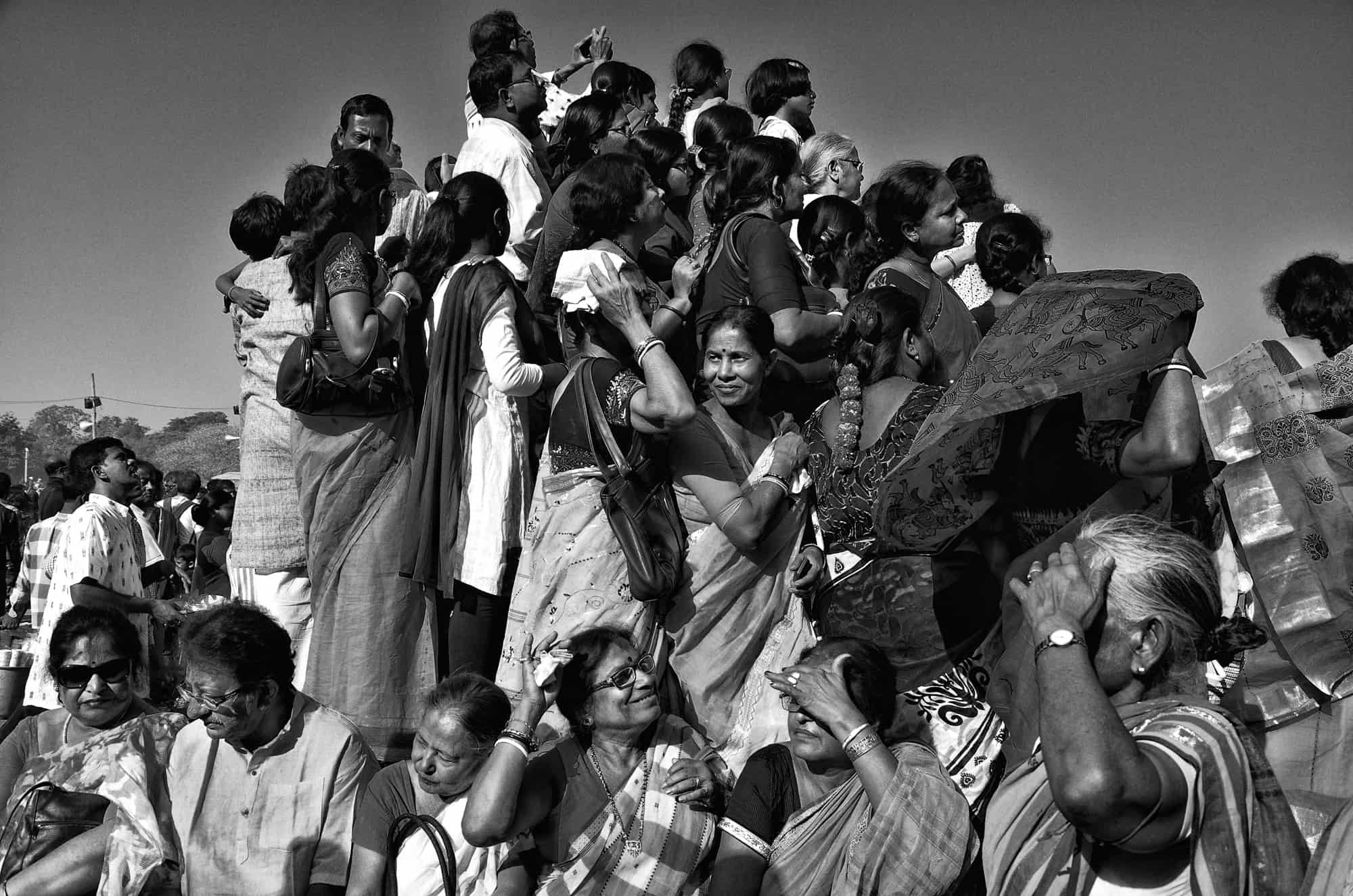
The town by river Kopai experiences an unprecedented cultural extravaganza at the onset of spring that justifies the Bengali’s claim to be the French of India! Dainty women, clad in bright yellow sarees dances on an arid land, yellow ochre in color. The dust is colored Red as Palash, a flower announcing spring from the high of leafless trees or the tender rounded earlobe of women it adores. A dust hued green and blue take a plight up in the sky as thousands sing “Ore Grihobashi, Khol Dwar Khol, Laglo je Dol.”
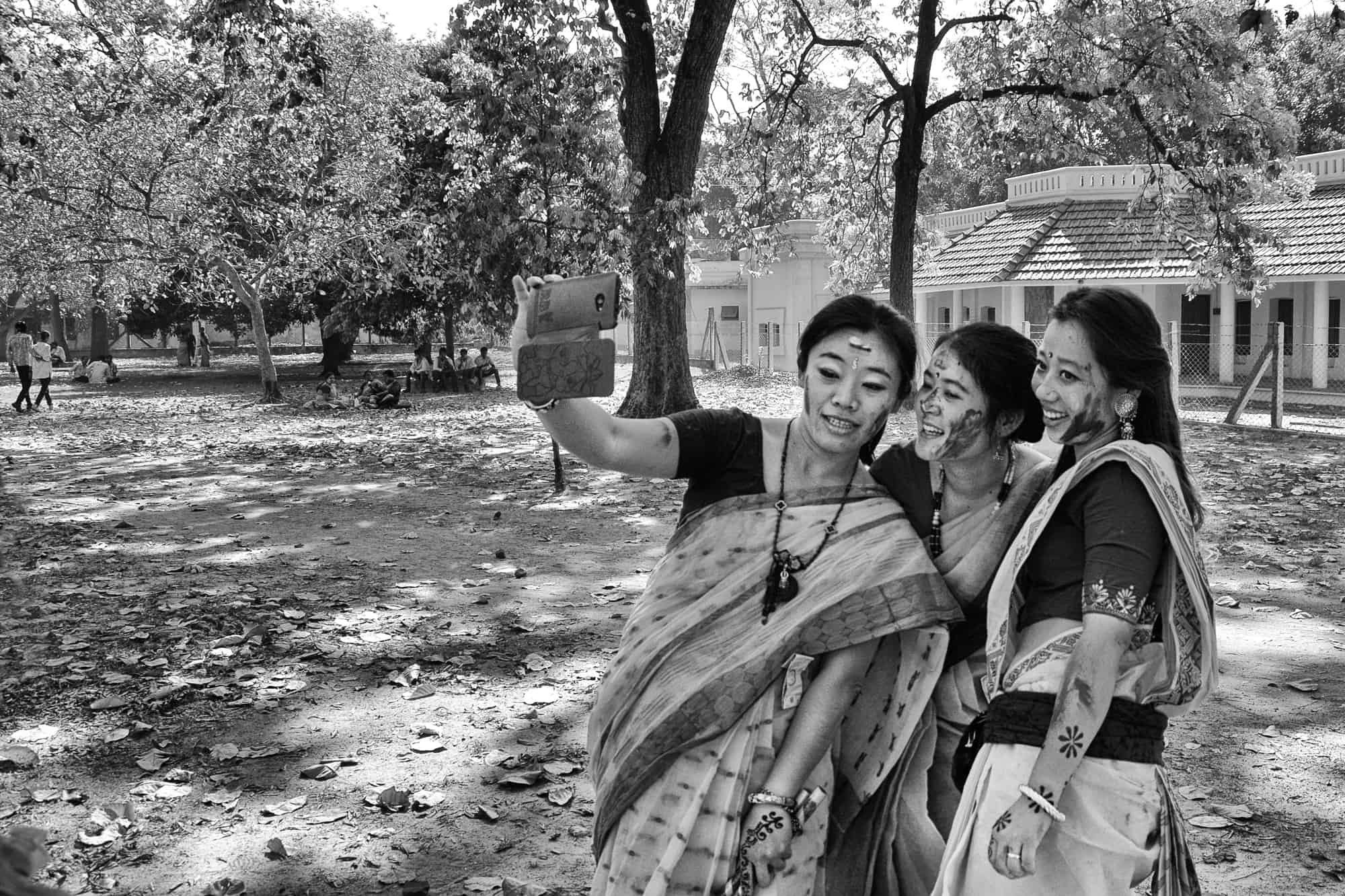
The distinct celebration of Dol/ Holi in Shantiniketan, West Bengal
Basanta Utsab ( Spring Festival) stays true to the quintessential liberal arty character of Shantiniketan. ‘Apart from worshipping the Formless, no community may worship any idol depicting god, man, or animals; neither may anyone arrange sacrificial fires or rituals in Santiniketan…. No insult to any religion or religious deity will be allowed here. The sermons given here will be such that will be appropriate to the worship of the Creator and Father and will help in ethics, benevolence and brotherhood…’ said the founder Maharshi Devendranath Thakur, who took an instant liking of the vast land back in nineteenth century and purchased it from the Jamindar for a token money of Rs 1.
An erstwhile center for spiritual practice making no discrimination for religions, Shantiniketan became an institute with Rabindranath Thakur’s efforts, imparting education deeply rooted in Indian heritage. Starting from the manuscript of Tibet to the Slokas of Tamil temples, every resource was indispensable. Many notable alumni of Ashram* contributed to the mankind.
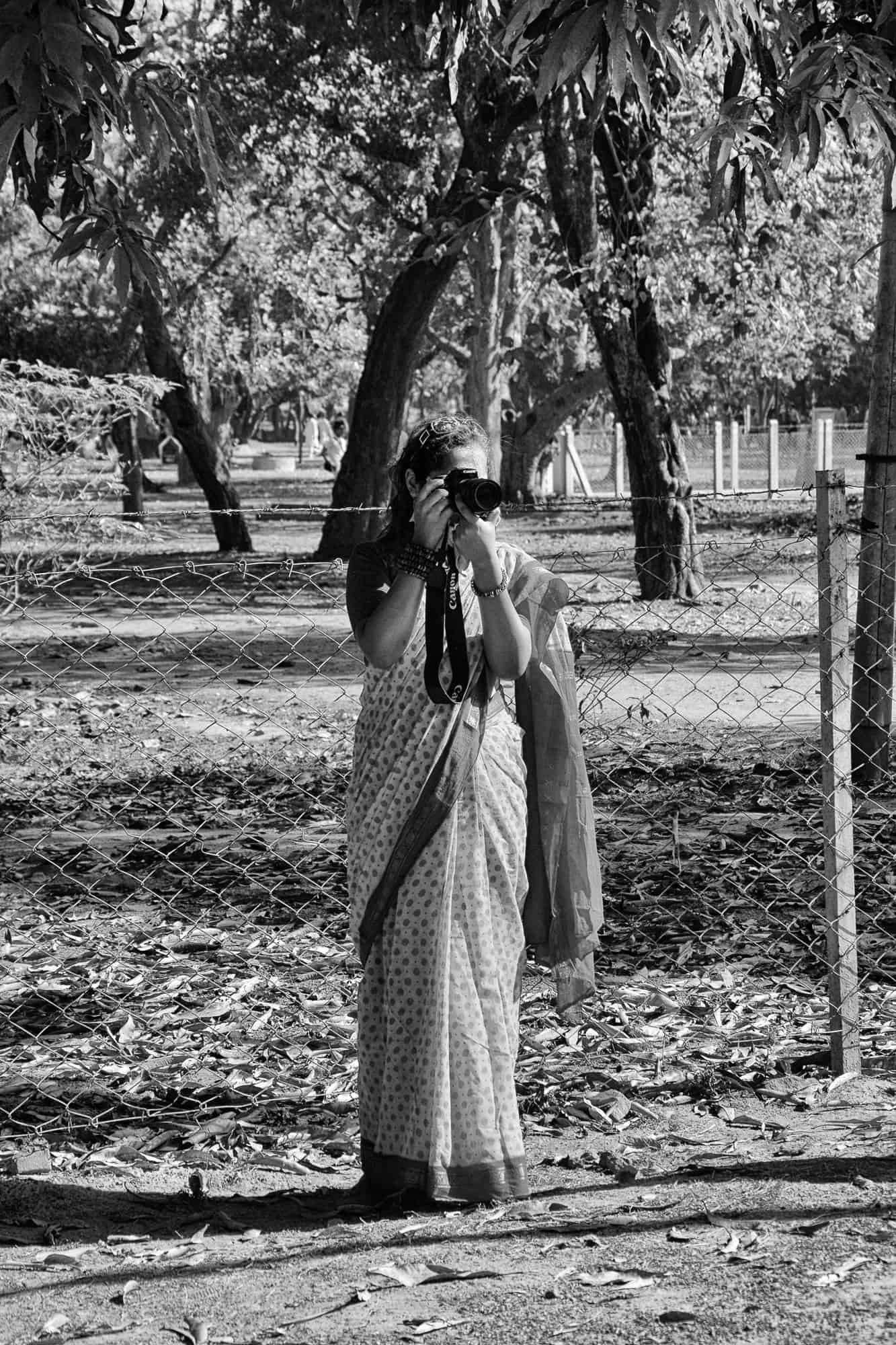
Also read: Bonedi Barir Durgapuja in Kolkata: an experience that takes you to time travels!
Shantiniketan and its impact as I was growing up
Even before Taliban took control and America started to bomb, there thrived an amusing culture in Afghanistan. Saiyad Mustafa Siraj was the first person who introduced me to the country and impeccable style of travel writing in his book Deshe Bideshe. Multiple times he had referred to his life in Shantiniketan during the journey. The Noble laureate, Amartya sen, refers to Shantiniketan as home. And in line with my ancestry from Bankura, let me take pride in mentioning the pioneer sculptor Ramkinkar Baij. You can not take a stroll in the campus without noticing the fine exemplary of nature inspired Santhal human mechanisms. And these are just a handful examples of many talents the university churned out.
Basanta Utsav in Shantiniketan differs largely from the Holi celebrated in North India. The color is also known as Aabir, essentially organic. There is no Bhaang in the vicinity. Participation from every strata of society is encouraged and celebrated. It is not unusual to find the local tribe women dancing hand in hand forming a circle. The students of Pathabhaban (the school) and University (Bishwa Bharatai University) start dancing from the famed Chatim tree, the tree that brought enlightenment and peace on the founder.
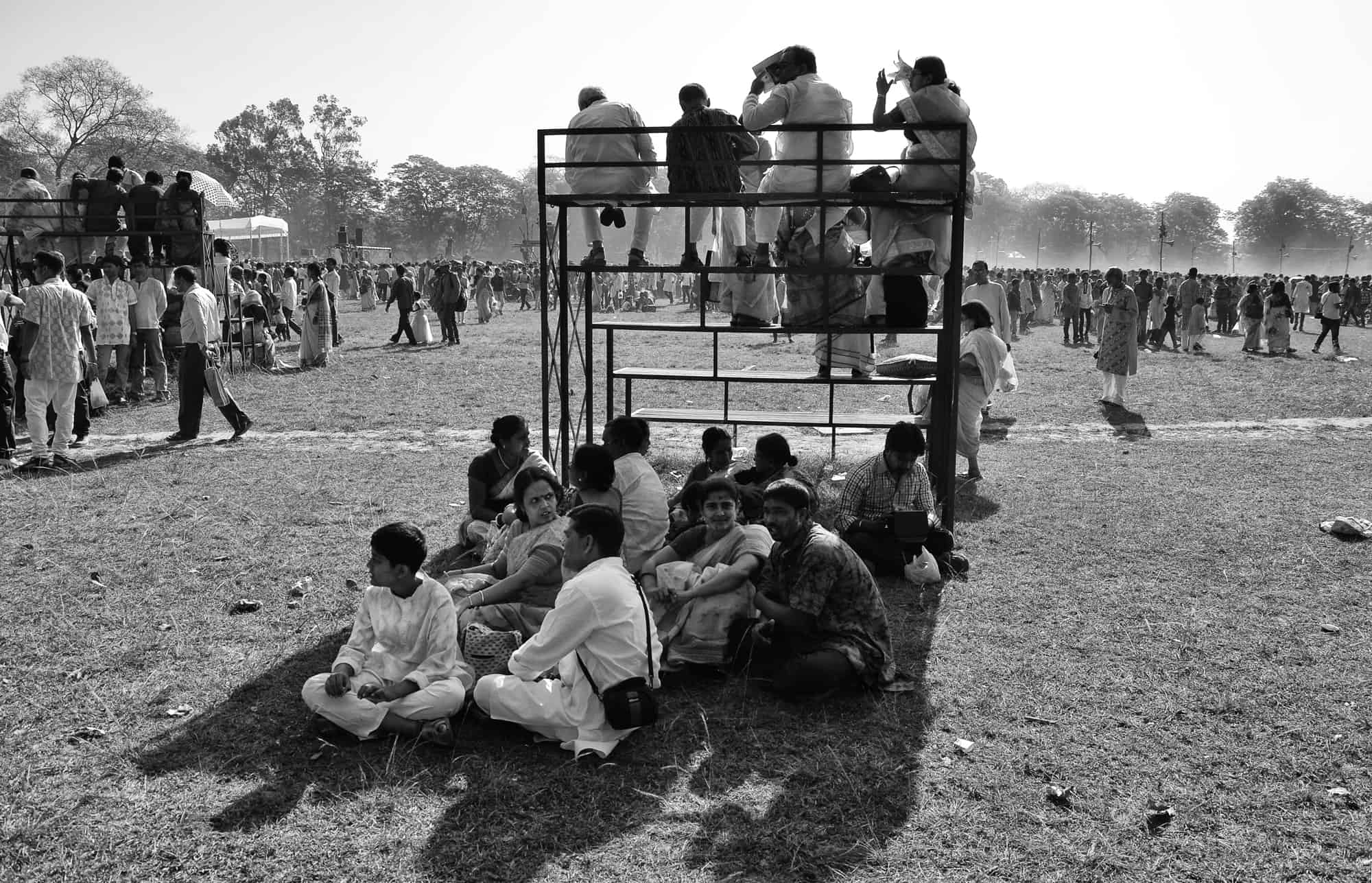
The celebration of Dol Utsab at Shantiniketan goes on with music, dance, spontaneous expression of people and love. I have never heard or personally felt the threat of being groped or assaulted.
If crowd makes you weary, take a stroll to the Khowai. The purple soil of the river bed had amused plenty of Bengali film makers to shoot a scene or two in the wilderness. A deer park lies by the river bank. Make a stop to watch the locals extracting palm syrup from the trees. A baul wanders away with an ektara (Bengali version of ukulele). The mud walls flaunt jatra posters, often in Olchiki (Santhal language).
“I have seen the face of Bengal, I need not search the beauty of the world.”
“বাংলার মুখ আমি দেখিয়াছি, তাই আমি পৃথিবীর রূপ
খুঁজিতে যাই না আর : অন্ধকারে জেগে উঠে ডুমুরের গাছে
চেয়ে দেখি ছাতার মতন বড়ো পাতাটির নিচে বসে আছে
ভোরের দোয়েলপাখি — চারিদিকে চেয়ে দেখি পল্লবের স্তূপ
জাম — বট — কাঠালের — হিজলের — অশখের করে আছে চুপ;
ফণীমনসার ঝোপে শটিবনে তাহাদের ছায়া পড়িয়াছে;
মধুকর ডিঙা থেকে না জানি সে কবে চাঁদ চম্পার কাছে
এমনই হিজল — বট — তমালের নীল ছায়া বাংলার অপরূপ রূপদেখেছিল; বেহুলার একদিন গাঙুড়ের জলে ভেলা নিয়ে —
কৃষ্ণা দ্বাদশীর জোৎস্না যখন মরিয়া গেছে নদীর চরায় —
সোনালি ধানের পাশে অসংখ্য অশ্বত্থ বট দেখেছিল, হায়,
শ্যামার নরম গান শুনেছিলো — একদিন অমরায় গিয়ে
ছিন্ন খঞ্জনার মতো যখন সে নেচেছিলো ইন্দ্রের সভায়
বাংলার নদী মাঠ ভাঁটফুল ঘুঙুরের মতো তার কেঁদেছিলো পায়।”
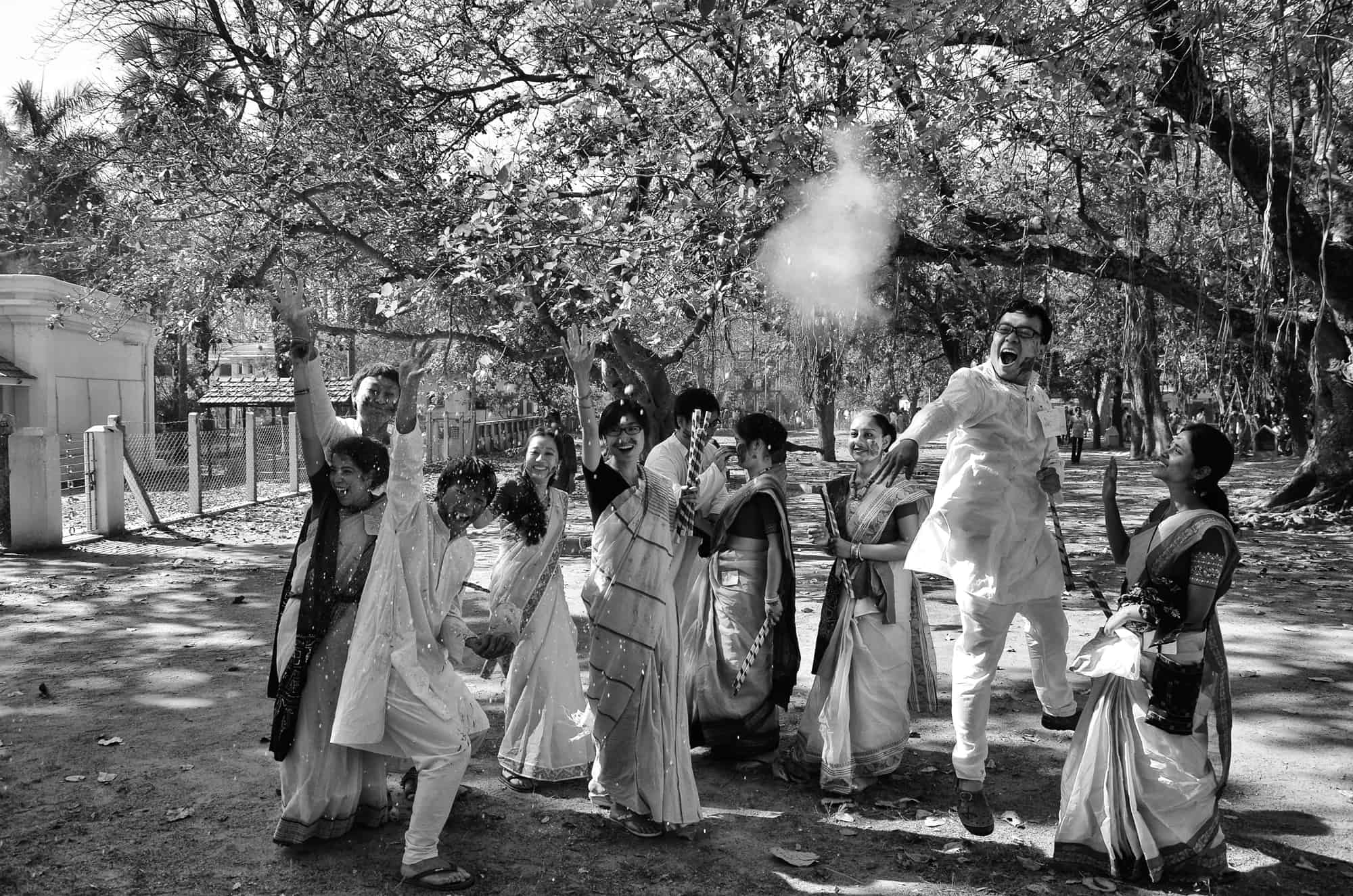
Things to Remember before planning a trip to Shantiniketan:
`
- Basanto Utsav at Shantiniketan calls for countless footfall, majorly from Bengali households. It gets as crowded as Durga Puja in Kolkata.
- We highly recommend to arrange for a stay before you visit. There are plenty of hotels and home-stays available. Check here to book your stay at Bolpur, Shatiniketan for Best price. The home-stays or accommodations that I recommend at Bolpur Shantiniketan are: Aamar Bari Ekante, Gitanjali, Nayantara, Shantiniketan Bungalow, Upasana Eco Resort.
- Buy a saree or two from the Sonajhuri Haat where tribal women from nearby villages flock with their handicraft. I love the ones they sell in Batik print.
- Indulge in Dhokra jewelry. The brass metal jewelry is a legacy dating back to Harappa civilization.
- Binge on the Bengali thalis starting from Shukto, proceeding with Sabki, Bhaja, Fish Curry, Daal and ending with a bowl full of Payesh! (I think I should write more on this, stay tuned for a Bengali gourmet Post)
- Kolkata to Bolpur will take you a 3 hours road trip (about 150 km) . Multiple train frequents the route from Howrah station. I visited from Bankura, which was a 96 Km journey.
- You may also want to visit Shantiniketan during Paush mela (the last week of December) as an alternative to Dol Utsab. The chill of winter will remain.
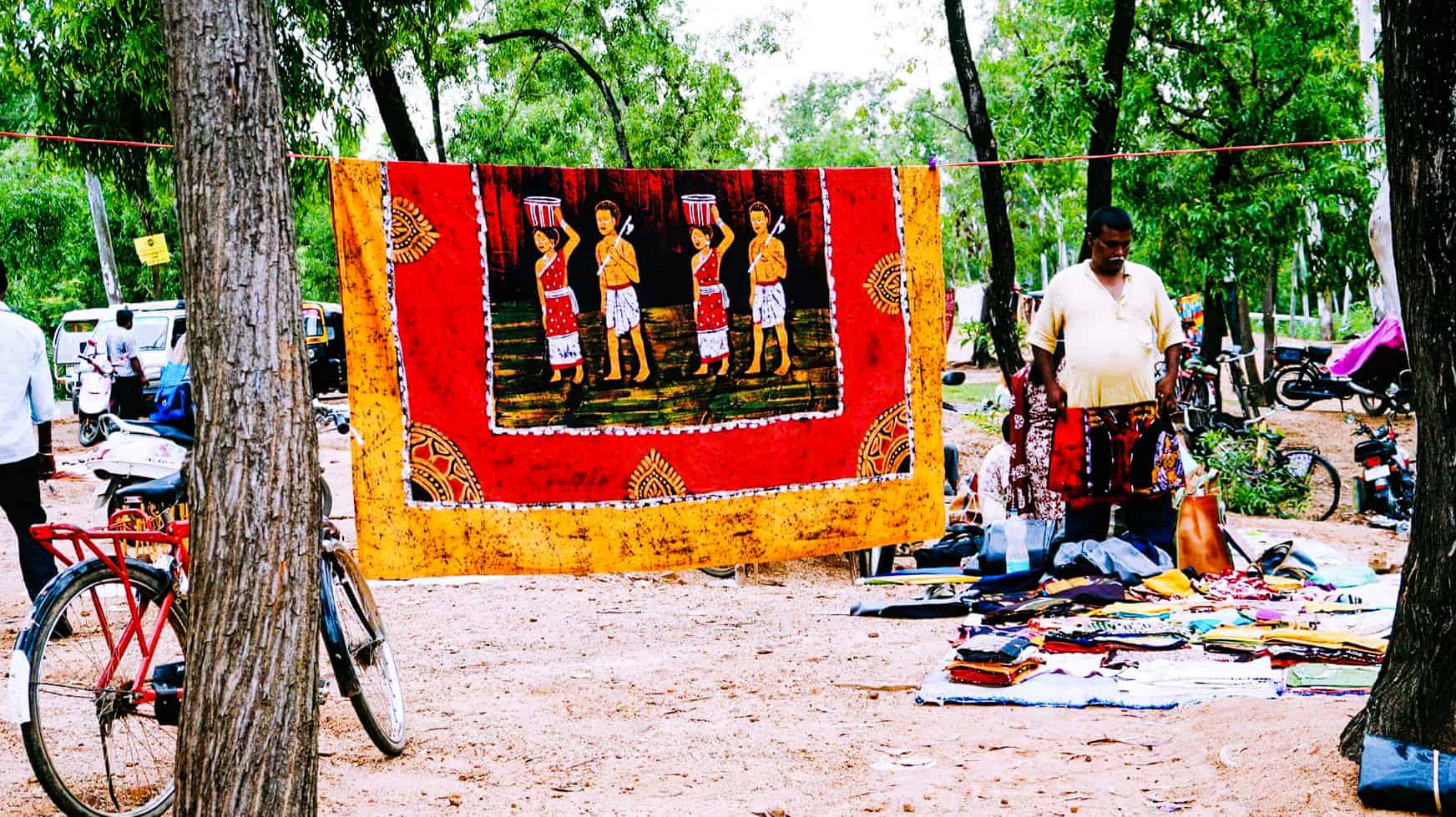
How to travel to Bolpur, Shantiniketan during Dol Utsab or Basanto Utsab?
Nearest Railstation: Bolpur
Nearest Airport: Andal for domestic flights or Kolkata (CCU) for international flights.
A number of daily trains ply between Bolpur and Sealdah (or Howrah). The train ride is for three hours. It is suggested you get your tickets done a few weeks prior at least.
From Bolpur to Shantiniketan, the distance is only 2 km. A day trip from Kolkata is possible provided you start early.
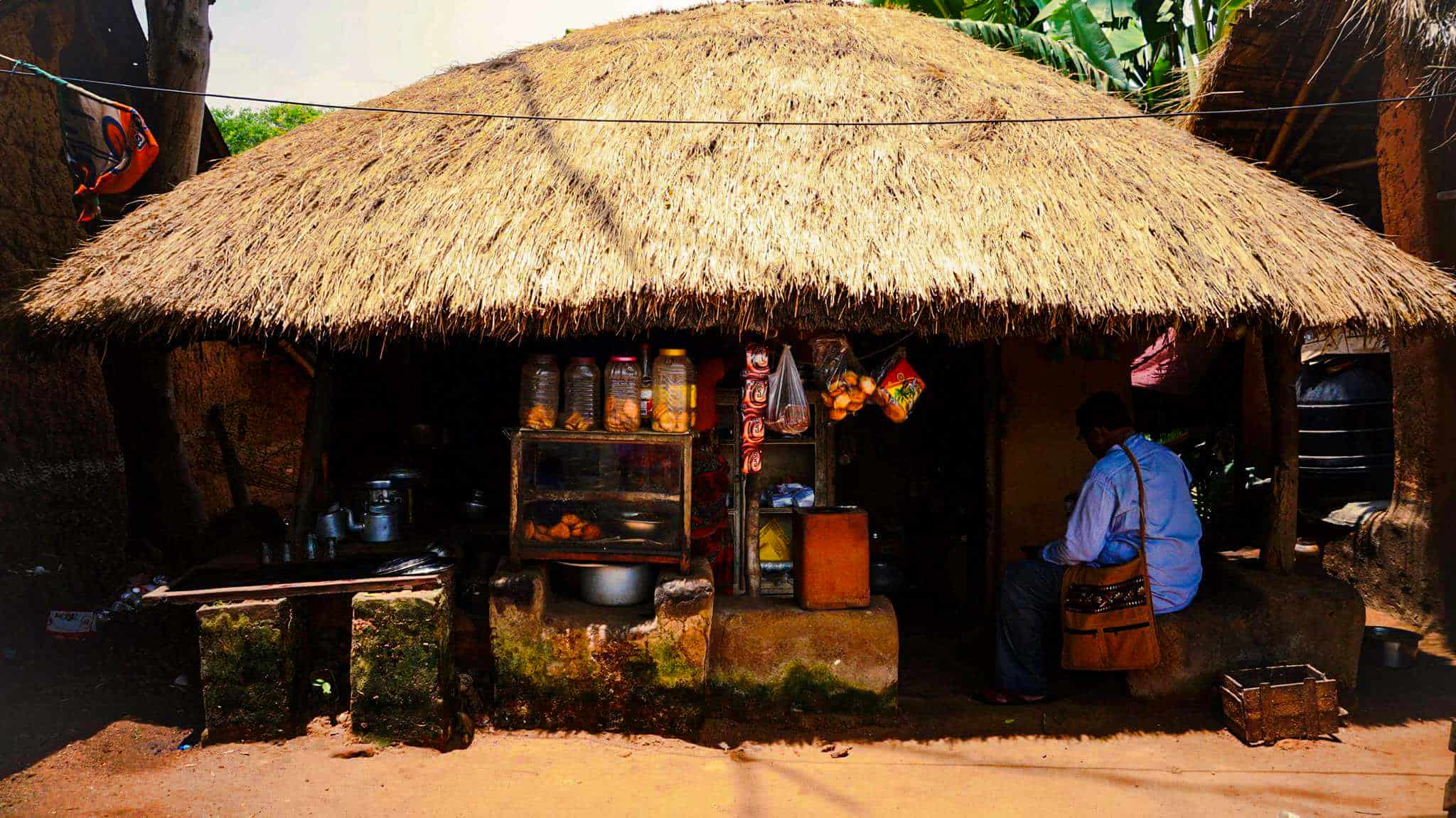
*Asharam or Gurugriho is the place of education as described in Hindu Mythology.
PS: Shantiniketan has been in the tentative list of UNESCO sights since 2010!
Also read: Rituals of a Bengali wedding, a photo blog!
Safety tips for women traveling to Shantiniketan during Dol Utsab or Basanta Utsab
Is it really safe for women during Holi in Shantiniketan, India?
Usually, Shantiniketan is famous for being courteous to women, even during an extremely crowded event such as holi. Women actually decks up in beautiful traditional attire and embraces nature in their ensemble. A leaf or two added to headgear, Abeer smeared on cheeks and Rabindrasangeet echoing at the horizon. In line with Rabindranath’s vision, eternal beauty is celebrated and cherished.
However, I would still urge you to take necessary precautions if you are traveling to Shantiniketan as a solo woman traveler.
- Ensure your friends and family knows about your whereabouts.
- Avoid crowd beyond University campus
- Ask around to be included in a student group to take a sneak-peak into the college celebration
- Do not venture outside after dark, say 6/7 pm.
- Trust your gut instincts.
- Do not drink with unknown people.
~
My visits to Shantiniketan date back to a decade and more. My father had a penchant for photography. However, as far as I remember, we did not click any photo but came back home with a lot of copy of sketches made by Rabindranath Thakur. In order to produce this blog post, I had to request for photos to the amazing photographers I know. Their kind contribution made this post look as beautiful!
The Black and White Collection for Basanta Utsab from Shantiniketan
When I requested for photos for Nilanjan Karmakar, he readily agreed to provide the snapshots, even if I wanted the colored variation. However, on a second thought, I decided to use the black and white series. The vivid life is expressed beautifully through the captures. So much life and positive energy!
Connect with Nilanjan in Facebook and Instagram
The burst of Color!
You have already met her in the captures of Dakini Jogini! These are captured by Amrita Gagan Chakraborty. “Khelbo holi, rang debo na, taai kokhono hay?” We will play holi and not smear each other with color? I thought of using her vivid pictures to depict how life really looks like in the rural Bengal.
Connect with her in Facebook and Instagram. And of course, read her blog!
Book your stay with Booking dot com for the best price!
Booking.com
(This post may contain affiliate links, please follow the disclosure page carefully.)
Want to get real time updates of my travels?
Get updates and read additional stories on the Orange Wayfarer Facebook page.
Follow Orange Wayfarer on Instagram.
Follow Orange Wayfarer on Twitter.
You may also subscribe to my weekly newsletter!
Thank you for sharing your experiences of celebrating Holi! I loved the photos you shared. For the consider purchasing the following are there supposed to be pics or links? I don’t think I’m seeing them aside from the Booking.com.
Umm. No No, you need to visit there and purchase these stuff. 😀 The handicrafts are made by locals, mainly tribals and sold in the local fare.
Thanks for sharing a unique look into the culture! I love the photos!
I bet this was an amazing experience! I’ve never been to India but I really want to go!
You have such a beautiful way of writing that almost reads like poetry. I love how eloquently you describe the sights and sounds of this celebration. The photography is beautiful as well. There is something so timeless about a black and white photo. I’ll always be partial to color, but there are times B&W just does a better job conveying a certain feeling and it worked so well in your post!
Since Holi is predominantly a festival of color, a black and white picture will only do a justice to the otherwise overwhelming surge of emotion! 🙂
Amazing & a gem of a post! It describes perfectly the cultural side of India. Do you think it’s safe for a solo traveler to visit this area?
-Stef-
Hey Stef. Thanks fort stopping by. It is absolutely safe for a solo woman traveler visiting this area.
What wonderful photos. I have heard so many great things about Holi, would love to experience it.
Do come down to experience the extravaganza!
I have been in India twice. Always wanted to have experience of Holi, but never was in correct time! It’s very colorful and perfect for photo shooting!!
It is so great to hear you have been in the country for couple of times. I hope holi or not, you had a great time!
Wow – Nilanjan’s images are amazing!
Never experienced Holi but it sounds like something I should experience 🙂
Thank you for including the useful points to remember.
Is not it? I loved them to the core.
I wish you a happy holi!
Holi is one of the most exceptional holidays in the world which I soon hope to cross off my bucket list. Your pictures are so stunning and inspiring!
Thank you for your kind words. Do visit India for the Spring Festival. You shall not regret. My word!
I’ve always wanted to visit Shantiniketan, particularly during Holi. Your post tempts me to plan that long-pending visit right away! 🙂
Shantiniketan is the place where peace and nature gets married to each other! You must definitely plan a visit.
Very Informative article indeed, what mesmerizes me are the different ways in which Holi is celebrated across different regions of India.I have researched and compiled different traditions of Holi celebrations.
How India Celebrates Holi